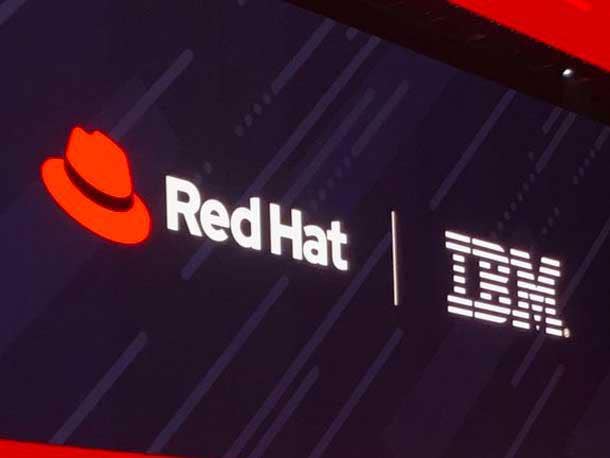With Red Hat's OpenShift Officially IBM's Kubernetes Platform Of Choice, Merging Of Portfolios Begins
The first joint product since IBM's acquisition of Red Hat closed three weeks ago is a set of Cloud Paks that offer containerized IBM middleware built on top of OpenShift to drive rapid, multi-cloud deployment.

IBM began merging its portfolio with new subsidiary Red Hat's Thursday by releasing containerized versions of popular middleware that leverage ownership of the industry's leading Kubernetes platform to facilitate rapid multi-cloud deployment.
Three weeks after closing a $34 billion deal that redefines the IT landscape, Big Blue has released five Cloud Paks—integrated middleware that sits on top of OpenShift, Red Hat's container management platform and now IBM's official Kubernetes platform of choice, Brian Fallon, director of worldwide digital and partner ecosystem, IBM cloud and cognitive software, told CRN.
The first joint IBM-Red Hat offering since the acquisition came to fruition takes advantage of Red Hat's container technology to make good on IBM's pledge to extend its solutions into hybrid and multi-cloud environments.
[Related: CRN Exclusive: Meet IBM's New Channel Chief]
The five Cloud Paks are all IBM-certified and enterprise-ready, Fallon said.
The Applications Cloud Pak offers a platform to build, test and deploy apps with a modern, micro-services framework, including developer tools and Red Hat runtimes.
The Integration Cloud Pak enables a modern approach to integrating apps, data, cloud services and APIs.
The Multi-Cloud Management Cloud Pak gives customers consistent visibility into governance across environments, both on- and off-premises to handle the "new reality of the hybrid multi-cloud world."
The Automation Cloud Pak helps transform business processes, decisions and automate tasks, including management of content.
And the Data Cloud Pak helps store, analyze and extract value from data, and enable artificial intelligence.
"Consistency and choice is what it's providing," Fallon said. "Consistency in environment, choice to run it in any infrastructure you want, public or private," he said, all within a supported and secure framework.
"We have a great advantage here in that we've standardized on the industry-leading Kubernetes platform," Fallon said of OpenShift.
Dorothy Copeland, global vice president, programs and business development, IBM Partner Ecosystem, said the Cloud Paks will help partners of both vendors extend their practices into new areas and expand their businesses.
"The real opportunity is around enabling partners together," Copeland said. "A lot of IBM partners are starting to build out Red Hat practices and Red Hat partners are doing the same, and the Cloud Paks are a great entry point."
They also present the more than 300 existing IBM-Red Hat partners a vehicle with which to expand those joint practices, Copeland said.
The Cloud Paks mark a change in course from IBM's recent play of containerizing its middleware catalog for consumption based on use case and not platform, said Sorin Vacaru, CTO of HighVail, a Red Hat partner based in Toronto.
Before it officially announced those products, IBM had introduced predecessors such as ICP for Data, Multi-Cloud Manager and Cloud Automation Manager.
And Big Blue was preparing to build software packages that could be deployed on top of other major Kubernetes platforms, not just OpenShift, Vacaru told CRN.
But not surprisingly, the purchase of Red Hat changed that vision—at least for the time being.
"I suspect they will hold off releasing that until the OpenShift play has been consolidated as the market leader," he said.